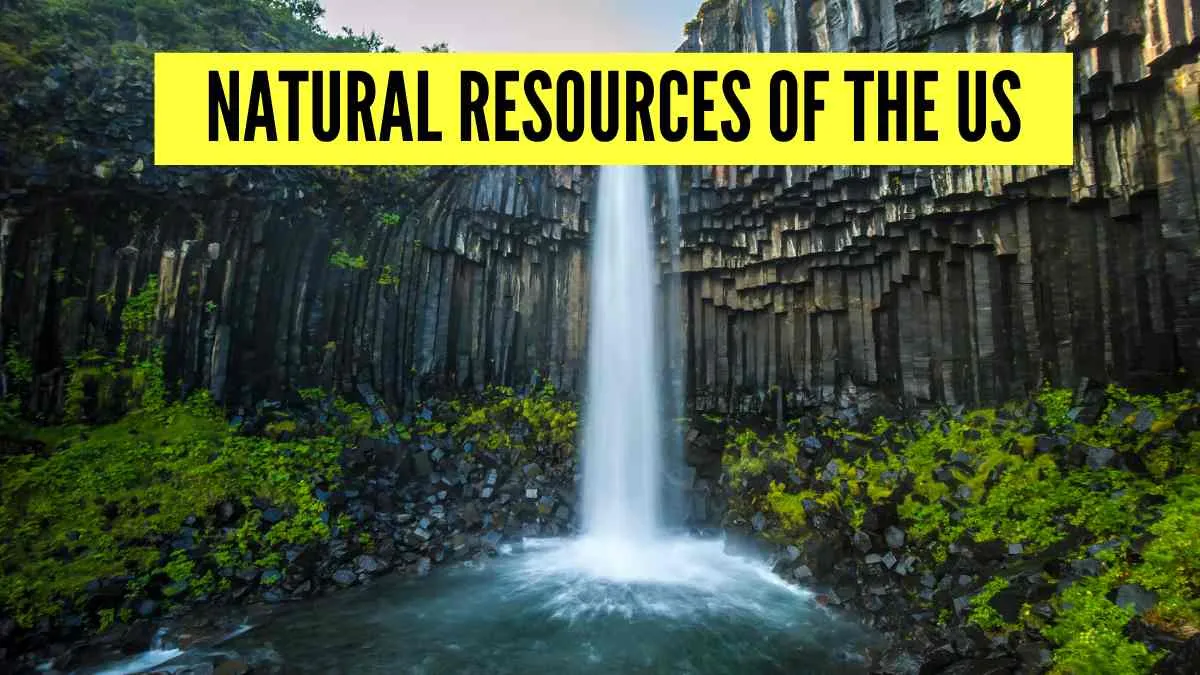The United States is one of the richest countries in the world when it comes to natural resources. From vast forests and fertile fields to large-scale deposits of coal, oil, natural gas, and valuable minerals, the country's landscape is filled with materials that fuel its economy and global impact. These resources support major industries such as energy, agriculture, manufacturing, and technology, and trillions of dollars contribute to the country's wealth. The U.S. also has abundant freshwater reserves and one of the largest supplies of rare earth elements in the world, which is important for clean energy and electronics. This incredible natural wealth has helped to shape the country's growth, energy freedom, and economic stability over the years. As the world transitions to new technologies and greenery solutions, the value of these resources is more important than ever. Understanding the depth and diversity of America's natural wealth provides insight into its power, flexibility, and capacity for future stability.
Check Out: Which State is Washington D.C in and How Did it Become the Capital of the U.S.?
1. Fossil Fuel
-1751380109362.jpg)
The United States has large reserves of fossil fuels, including coal, oil, and natural gas. According to the US Energy Information Administration (EIA), by January 1, 2024, the country had a total of about 469 billion small tonnes of coal, of which about 250 billion tonnes were recovered using current technology and methods. When it comes to oil and gas, the EIA said that by the end of 2023, the U.S. will have nearly 46.4 billion barrels of crude oil and about 603.6 trillion cubic feet of proven natural gas reserves. Both figures show a decline from the previous year. The part of the US Energy Department is responsible for collecting and sharing official data on the country's energy resources.
2. Metals and Industrial Minerals

The United States is rich in metals and industrial minerals that play an important role in manufacturing, construction, and high-tech industries. Major resources include copper, gold, silver, zinc, molybdenum, and lead. The US is one of the top producers in the world, with major mining operations in Arizona, Utah, and New Mexico. It also mainly holds significant gold and silver reserves in Nevada.
The country is one of the top global producers of molybdenum, a metal used in steel alloys, and phosphate rock deposits required for fertilizer production. According to the US Geological Survey (USGS), these minerals are important for national security and economic development. The USGS monitors production, reserves, and use, and helps policymakers to manage these valuable natural resources wisely.
3. Timber & Agriculture

The United States has huge wood and agricultural resources, which are essential for its economy and rural communities. The forest covers about 823 million acres, making one one-third of the land area of the country. The forestry industry contributes more than $ 200 billion to the economy each year and supports about one million jobs in logging, milling, paper production, and forest management. Major wood-producing states include Oregon, Washington, Georgia, and Alabama. In agriculture, the U.S. Food and fiber is one of the leading producers of the world.
With about 900 million acres of fields, it grows large amounts of corn, soybeans, wheat, cotton, and a wide range of fruits and vegetables. Livestock production, also a major component, including mutton, hen, and hog, is a major component. According to the US Department of Agriculture (USDA), about 5.5% of GDP in agriculture and related industries supports more than 19 million jobs, reflecting the important role of the field in food security and global trade.
4. Freshwater Resources

There is a large supply of freshwater in the United States, which is important for drinking, farming, and industry. The country has about 7% of the freshwater of the world, found in underground sources called lakes, rivers, reservoirs, and aquifers. Major freshwater sources include underground aquifers such as the Great Lakes, the Mississippi River, and Oglala. This water supports millions of people, helps grow crops, factories, and power plants.
States like Michigan, Minnesota, and Florida have particularly large amounts of fresh water. According to the US Geological Survey (USGS), the country uses hundreds of billions of gallons of water every day. Managing and protecting this resource is important for health, the environment, and the economy, especially as climate change affects rainfall and dried patterns.

Comments
All Comments (0)
Join the conversation